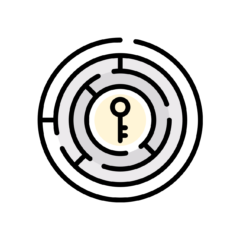Let’s consider what a resume should do. We know the end audience is generally going to be a recruiter/HR representative or a hiring manager. And we know that their time is very valuable and they scan resumes quickly to find out if they are interested in the content for whatever position they are hiring for. I’ve discussed the top 1/3 of the page, the ‘prime resume real estate’, creating an impactful first impression and generally addressing job content for a chronologic resume.
I’m going to address the functional resume here.
I mentioned what a functional resume looks like and that they aren’t very well received by most hiring managers and recruiters except if you are in a portfolio industry. By that, I mean the essence of what you are doing is the same skill set across multiple concurrent clients. Examples would be a producer/director, PR account exec, attorney, stock broker/financial planner, actor/entertainer, freelancer but not a career contractor (1099, you own your own business). In these cases, using a functional resume makes a lot of sense.
A functional resume is a list of skills (can be grouped many different ways) that you have followed by a list of employers with name, date, title, and location with no more information than that. There are a few reasons why functional resumes are unpopular.
1) Often they are used to cover a gap in employment. Recruiters would rather just have you tell them that you took a leave or were a primary caregiver for your family.
2) People using functional resumes are claiming skills that may be in their professional toolkit but that they haven’t used in a long time, causing longer ramp-up time and outdated training.
3) Most importantly, hiring managers want to see a progression of your skills as it relates chronologically to your work history. There is no context for how you gained the skills and how they have been applied. A functional resume gives no information of career progression and how you take ownership of your career and move forward.
Let’s take a portfolio resume for example. (This is a completely fictitious representation):
Cindy Smith
http://emeraldcityproduction.info
(206) 555-0988/cs@emeraldcityproduction.info
-Deep understanding of creative production tools including Flame, Smoke, Combustion, After Effects, Final Cut Pro, Softimage XSI and Quicktime.
-Expert knowledge of Mac-based production tools including Photoshop, and Illustrator.
-Over twelve years experience working with industry tools such as lighting instruments, cameras, microphones.
Strong project management skills including working with budgets in excess of $1M, vendor management, contract negotiations (including media licensing agreements).
-Projects range from music video, feature films and documentaries, to television commercials and streaming media ad campaigns.
Film Projects:
The Keeper’s Son ‘ Associate Producer (67 minutes) 2007 (Documentary)
*Honorable Mention, Seattle International Film Festival; shown at the Toronto Film Festival
Jewels of the Amazon: Endangered Species – Producer (41 minutes) 2002 (Documentary)
Animal Planet 2004; Discover Channel 2002
Coming of Age -1999 ‘ Production Coordinator ‘ Warner Brother’s Feature Film
Television:
Two For One ‘ Season 1-2 1996-1997; Writer/Researcher for 32 episodes for CBS detective drama.
Thicker Than Water ‘ Special Effect post-production Editor 1996 ‘ NBC mini-series- three-episodes; vampire thriller.
Commercials:
Microsoft Studios: Gobi Experiment 2008; Butterfly Kiss 2006; Easy 123 2005 ‘ Producer
Thirteen Coins Restaurant 2005 ‘Producer, writer
Tyee Chamber of Commerce 2002 ‘Producer Post Production Editor
Music Video:
Portents of Doom: ‘Sunday’s Kiss’ ‘ 2008 Camera, Post Production Editor
*Video reached 1 million hits on YouTube in one week.
Portents of Doom: ‘Any Man’s Guess’ -2006 Camera, Post Production Editor
*Alcazar Records signed Portents of Doom after seeing this video on MySpace in less than three weeks.
Streaming Media:
Bungie Studios: Halo 4 ad ‘ 2008 Post Production Editor
Comcast (Internet) ‘ Video Editor 2006
Extap Studios ‘ Turner’s Revenge feature film trailer -2004 Special Effects Editor
Education:
MFA ‘ American Film Institute Conservatory 2001
BA Multimedia Design ‘The Art Institute of Seattle 1995
B />
As we can see, there is no indication of what tools/knowledge were used for each position, which is problematic in other industries. We also have to piece together what she worked on at what time, which in the corporate world is the key experience indicator hiring managers are looking for. The lesson is: unless you are using the same skills consistently over a period of time, avoid the functional resume.
